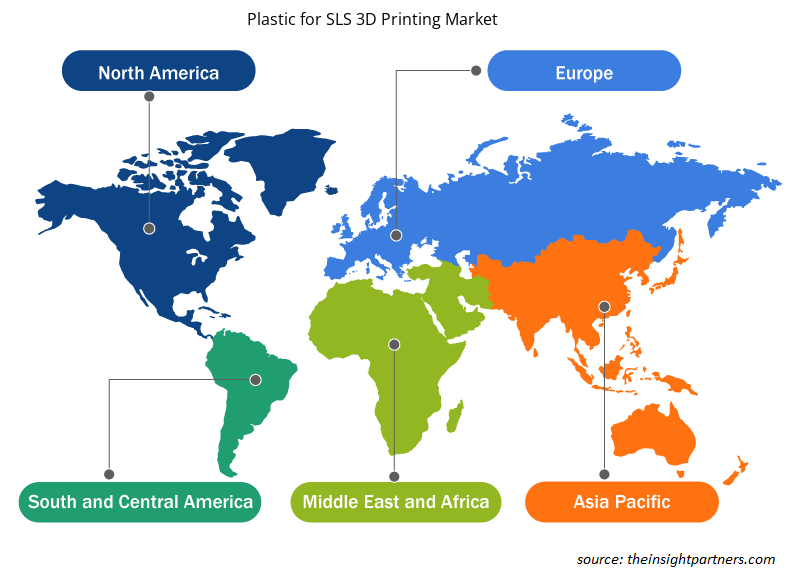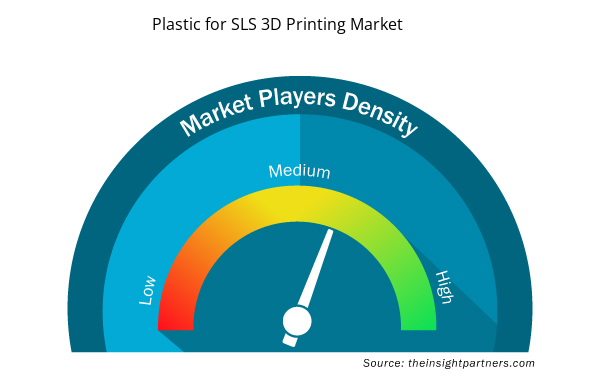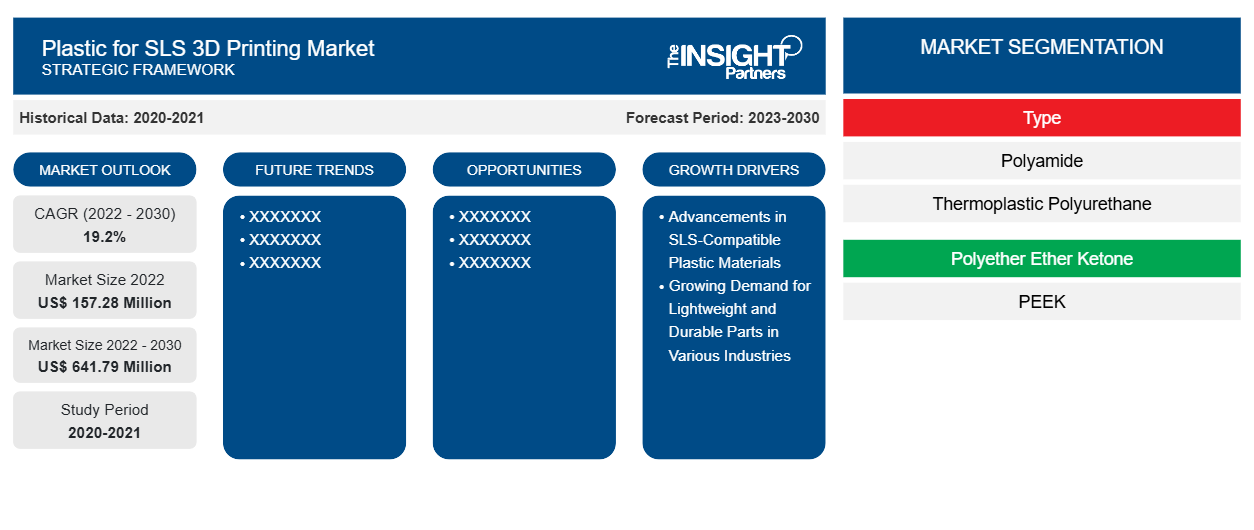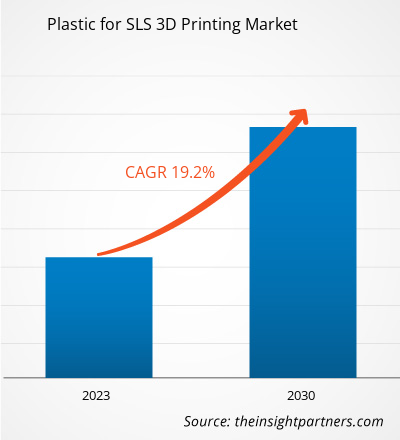[調査レポート] SLS 3Dプリンティング用プラスチックの市場規模は、2022年に1億5,728万米ドルと評価され、2030年までに6億4,179万米ドルに達すると予測されています。また、2022年から2030年にかけて19.2%のCAGRを記録すると予想されています。
市場分析
選択的レーザー焼結法(SLS)は、高出力レーザーを使用してポリマー粉末を3Dモデルに基づいて固体構造に焼結する積層造形技術です。SLS 3D印刷は、エンジニアやメーカーに人気の選択肢です。SLS 3D印刷の最も一般的な材料はナイロンです。ナイロンは、機能的なプロトタイピングや最終用途の生産に適した非常に有能なエンジニアリング熱可塑性プラスチックです。また、複雑なアセンブリや環境安定性の高い耐久性のある部品にも最適です。SLS 3D印刷は、エンジニアリング、製造、ヘルスケアなど、幅広い業界で広く使用されています。SLS 3D印刷市場向けプラスチックの成長を牽引する主な要因は、SLS互換プラスチック材料の進歩と、さまざまな業界での軽量で耐久性のある部品の需要の高まりです。
成長の原動力と課題
SLS 対応プラスチック材料の進歩と、さまざまな業界での軽量で耐久性のある部品の需要の高まりは、SLS 3D 印刷用プラスチックの世界的な市場成長を後押しするいくつかの要因です。多くの企業は、耐久性、耐熱性、柔軟性などの特性が向上した SLS 対応プラスチック材料の継続的な開発に注力しています。たとえば、HP や BASF などの企業は、革新的な SLS 材料の開発に協力しています。軽量化が燃費向上の最大の関心事である航空宇宙業界では、SLS で製造されたプラスチック部品が注目を集めています。たとえば、エアバスは、ブラケットやダクト部品など、SLS 3D 印刷されたプラスチック部品を A350 XWB 航空機に統合し、強度や安全性を損なうことなく軽量化に貢献しています。自動車業界も SLS プラスチック部品を採用しています。したがって、さまざまな業界からの軽量プラスチック部品の需要の大幅な増加が、SLS 3D 印刷用プラスチックのニーズを促進し、市場の成長を促進しています。
高品質の SLS 対応プラスチック材料のコストは、この技術の採用を検討しているコスト意識の高い企業にとって抑止力となる可能性があります。SLS には、強度と耐久性を備えた複雑な部品を製造できるなど、多くの利点がありますが、材料の価格は意思決定プロセスの重要な要素となる可能性があります。したがって、SLS 対応プラスチックの高コストにより、さまざまなアプリケーション セクターでの使用が制限され、SLS 3D 印刷用プラスチック市場の成長が妨げられています。
要件に合わせてレポートをカスタマイズする
このレポートの一部、国レベルの分析、Excelデータパックなど、あらゆるレポートを無料でカスタマイズできます。また、スタートアップや大学向けのお得なオファーや割引もご利用いただけます。
- このレポートの主要な市場動向を入手してください。この無料サンプルには、市場動向から見積もりや予測に至るまでのデータ分析が含まれます。
レポートのセグメンテーションと範囲
「SLS 印刷用プラスチックの世界市場分析と 2030 年までの予測」は、世界市場の動向と成長機会に重点を置いた専門的で詳細な調査です。このレポートは、タイプ、最終用途産業、および地理に基づいて詳細な市場区分を行い、世界市場の概要を提供することを目的としています。レポートでは、世界中の SLS 3D 印刷用プラスチックの消費量に関する主要な統計と、主要な地域と国での需要が示されています。さらに、レポートでは、主要な地域と国での SLS 3D 印刷用プラスチック市場のパフォーマンスに影響を与えるさまざまな要因の定性的な評価も提供しています。また、SLS 3D 印刷用プラスチック市場の主要プレーヤーと主要な戦略的展開に関する包括的な分析も含まれています。市場ダイナミクスの分析も含まれており、主要な推進要因、市場動向、収益性の高い機会を特定するのに役立ちます。これにより、主要な収益源を特定するのに役立ちます。
エコシステム分析とポーターの 5 つの力の分析により、SLS 3D 印刷市場向けの世界のプラスチックの 360 度のビューが提供され、サプライ チェーン全体と市場の成長に影響を与えるさまざまな要因を理解するのに役立ちます。
セグメント分析
世界のSLS 3D印刷用プラスチック市場は、タイプと最終用途産業に基づいて分割されています。タイプに基づいて、SLS 3D印刷用プラスチック市場は、ポリアミド、熱可塑性ポリウレタン(TPU)、ポリエーテルエーテルケトン(PEEK)、その他に分類されます。ポリアミドセグメントは、2022年にSLS 3D印刷用プラスチック市場の大きなシェアを占めました。ポリアミドは、その優れた品質と適応性により、SLS 3D印刷に適した材料です。SLSに使用されるさまざまな種類のポリアミドの中で、ポリアミド12(PA12)が特に人気があります。主に強度、柔軟性、耐薬品性、耐熱性のために利用されており、幅広い用途に最適です。熱可塑性ポリウレタン(TPU)は、SLS 3D印刷市場で多用途でますます人気のある材料です。TPUは、柔軟性、耐久性、弾力性の優れたバランスを示すエラストマーの一種であり、幅広い用途に適しています。 SLS 3D 印刷市場において、PEEK は他の熱可塑性プラスチックとは異なる独自の特性の組み合わせを提供します。
最終用途産業の面では、市場はヘルスケア、航空宇宙および防衛、自動車、エレクトロニクス、その他に分類されています。さらに、エレクトロニクスセグメントは、2022年にSLS 3D印刷市場向けプラスチックの大きなシェアを占めました。SLS 3D印刷技術は、複雑でカスタマイズされた小規模の電子部品を製造するためのいくつかの利点を提供します。プラスチックベースのSLS 3D印刷は、主に民生用電子機器のカスタマイズされたエンクロージャとケースの製造に利用されています。自動車分野のSLS 3D印刷でプラスチックを使用する主な利点は、業界の厳しい性能と安全基準を満たす複雑で軽量な部品を製造できることです。プラスチック材料は、ヘルスケア分野における急速に成長しているSLS 3D印刷の分野で重要な役割を果たしています。これらの汎用ポリマーは、生体適合性、カスタマイズの容易さ、および費用対効果の高さから、さまざまな用途に広く利用されています。
地域分析
このレポートでは、北米、ヨーロッパ、アジア太平洋 (APAC)、中東およびアフリカ (MEA)、中南米の5つの主要地域に関して、世界のSLS 3Dプリント用プラスチック市場の詳細な概要を提供しています。ヨーロッパはSLS 3Dプリント用プラスチック市場で大きなシェアを占めており、2022年には5,500万米ドル以上の価値がありました。ヨーロッパの自動車業界は、燃費と性能を向上させるために車両重量を軽減する方法を常に模索しています。さらに、この地域の自動車産業の成長は、SLS 3Dプリント用プラスチックの需要を促進すると予想されています。アジア太平洋地域のSLS 3Dプリント用プラスチック市場は、2030年までに1億1,000万米ドル以上に達すると予想されています。アジア太平洋地域には、中国、日本、韓国など、世界最大の製造経済国がいくつか存在しています。これらの国々は、SLS 3Dプリントなどの高度な製造技術に多額の投資を行っています。この地域には、積層造形およびSLS 3D印刷企業も存在しており、予測期間中にSLS 3D印刷用プラスチック市場の成長がさらに促進されると予想されています。北米のSLS 3D印刷用プラスチック市場は、2022年から2030年にかけて約18%のCAGRを記録すると予想されています。この地域のSLS 3D印刷企業の存在により、SLS 3D印刷用プラスチックの需要がさらに高まると予想されています。SLS 3D印刷企業は、最終用途産業からの高まる需要に応えるために、事業拡大の戦略を立てています。この地域の自動車産業と航空宇宙産業の成長により、今後数年間でSLS 3D印刷用プラスチック市場に有利な機会がさらに生まれると予想されています。
業界の発展と将来の機会
SLS 3D 印刷用プラスチック市場で活動している主要企業が行っているさまざまな取り組みを以下に示します。
- 3D Systemsは2023年6月、日本における大型ペレット押し出し3Dプリントの導入促進に向けて、株式会社スワニーとの協業を発表した。
- 3D Systemsは2021年2月、Jabil Inc.と共同で、高速Fusion産業用3Dプリンタープラットフォームと材料ポートフォリオを発表しました。
- エボニックは2022年10月、CO2排出量がはるかに少ないPA12パウダーを導入することで、INFINAMポリアミド12(PA12)パウダーを調整し、全体的なエコバランスを改善することを計画しました。
SLS 3D 印刷向けプラスチック市場地域別分析
予測期間を通じて SLS 3D 印刷用プラスチック市場に影響を与える地域的な傾向と要因は、Insight Partners のアナリストによって徹底的に説明されています。このセクションでは、北米、ヨーロッパ、アジア太平洋、中東、アフリカ、南米、中米にわたる SLS 3D 印刷用プラスチック市場のセグメントと地理についても説明します。

- SLS 3Dプリント市場向けプラスチックの地域別データを入手
SLS 3D 印刷用プラスチック市場レポートの範囲
| レポート属性 | 詳細 |
|---|---|
| 2022年の市場規模 | 1億5,728万米ドル |
| 2030年までの市場規模 | 6億4,179万米ドル |
| 世界のCAGR(2022年 - 2030年) | 19.2% |
| 履歴データ | 2020-2021 |
| 予測期間 | 2023-2030 |
| 対象セグメント | タイプ別
|
| 対象地域と国 | 北米
|
| 市場リーダーと主要企業プロフィール |
|
市場プレーヤーの密度:ビジネスダイナミクスへの影響を理解する
SLS 3D 印刷市場向けプラスチックは、消費者の嗜好の変化、技術の進歩、製品の利点に対する認識の高まりなどの要因により、エンドユーザーの需要が高まり、急速に成長しています。需要が高まるにつれて、企業は提供を拡大し、消費者のニーズを満たすために革新し、新たなトレンドを活用し、市場の成長をさらに促進しています。
市場プレーヤー密度とは、特定の市場または業界内で活動している企業または会社の分布を指します。これは、特定の市場スペースに、その市場規模または総市場価値に対してどれだけの競合相手 (市場プレーヤー) が存在するかを示します。
SLS 3D 印刷用プラスチック市場で事業を展開している主要企業は次のとおりです。
- 3Dシステムズ株式会社
- BASF SE
- エボニック インダストリーズ AG
- アルケマSA
- エンズィンガー株式会社
免責事項:上記の企業は、特定の順序でランク付けされていません。

- SLS 3Dプリント用プラスチック市場のトップキープレーヤーの概要を入手
COVID-19パンデミックの影響/地政学的シナリオの影響/景気後退の影響
COVID-19パンデミック以前は、世界中の多くの国が経済成長を報告していました。主要メーカーは、SLS 3Dプリント用プラスチックの研究開発に投資しました。また、幅広い顧客基盤に対応するために、合併や買収戦略を通じて地理的範囲の拡大にも注力しました。パンデミックの間、サプライチェーンの混乱、原材料と労働力の不足、運用上の困難により需要と供給のギャップが生じ、SLS 3Dプリント市場向けプラスチックの成長に悪影響を及ぼしました。メーカーは、サプライヤーから原材料や材料を調達する際に課題があると報告し、それによってSLS 3Dプリント用プラスチックの生産率に影響を与えました。さらに、サプライチェーンの深刻な混乱と熟練労働者の不足によって引き起こされた生産不足により、多くの地域、特にアジア太平洋、ヨーロッパ、北米で需要と供給のギャップが生じました。自動車業界からの需要の変動により、前述の地域でも需要と供給のギャップが記録されました。
3Dプリントサービスの再開に伴い、SLS 3Dプリント用プラスチックの売上が増加しました。各国政府がワクチン接種キャンペーンの調整など重要な対策を講じたため、SLS 3Dプリント用プラスチック市場は回復し始めました。自動車、航空宇宙、防衛分野の事業回復に伴い、3Dプリント材料の需要が高まっています。さらに、世界中でエレクトロニクス分野の拡大が、SLS 3Dプリント用プラスチックの需要を押し上げています。
競争環境と主要企業
3D Systems Corp、BASF SE、Evonik Industries AG、Arkema SA、Ensinger GmbH、Fiberlab SA、Stratasys Ltd、Sinterit Sp Zoo、EOS GmbH、および CRP Service SRL は、SLS 3D 印刷用プラスチック市場で事業を展開している主要企業です。
- 過去2年間の分析、基準年、CAGRによる予測(7年間)
- PEST分析とSWOT分析
- 市場規模価値/数量 - 世界、地域、国
- 業界と競争環境
- Excel データセット


- Passport Reader Market
- Europe Tortilla Market
- Medical and Research Grade Collagen Market
- Broth Market
- Single Pair Ethernet Market
- Parking Management Market
- Artificial Intelligence in Healthcare Diagnosis Market
- Digital Language Learning Market
- Portable Power Station Market
- Public Key Infrastructure Market

Report Coverage
Revenue forecast, Company Analysis, Industry landscape, Growth factors, and Trends

Segment Covered
This text is related
to segments covered.

Regional Scope
North America, Europe, Asia Pacific, Middle East & Africa, South & Central America

Country Scope
This text is related
to country scope.
よくある質問
The increasing demand for SLS 3D printing from the healthcare industry, is expected to provide lucrative growth opportunities to the global plastic for SLS 3D printing market during the forecast period.
Based on end-use industry, automotive is the fastest-growing segment. Plastic SLS 3D printing has been employed in the production of end-use parts, including interior panels, dashboard components, and even lightweight structural elements, where the combination of strength and reduced weight is paramount for improved fuel efficiency and overall vehicle performance.
Europe plastic for SLS 3D printing market is expected to surge due to the growing automotive and aerospace industry in the region. The automotive industry in Europe is constantly seeking ways to reduce vehicle weight to improve fuel efficiency and performance. Therefore, Europe accounts for the largest share of the global plastic for SLS 3D printing market.
Based on the type, the polyamide segment accounted for the largest revenue share. Polyamide offers several advantages such as superior impact strength and excellent layer adhesion, making it well-suited for applications requiring both mechanical integrity and resilience. Therefore, this factor is expected to boost the polyamide share in the market.
The major players operating in the global plastic for SLS 3D printing market are 3D Systems Corp, BASF SE, Evonik Industries AG, Arkema SA, and Fiberlab SA amongst others.
Advancements in SLS-compatible plastic materials and growing demand for lightweight and durable parts in various industries, are some of the key driving factors for the plastic for SLS 3D printing market.
Trends and growth analysis reports related to Chemicals and Materials : READ MORE..
The List of Companies - Plastic for SLS 3D Printing Market
- 3D Systems Corp
- BASF SE
- Evonik Industries AG
- Arkema SA
- Ensinger GmbH
- Fiberlab SA
- Stratasys Ltd
- Sinterit Sp Zoo
- EOS Gmb
- CRP Service SRL
The Insight Partners performs research in 4 major stages: Data Collection & Secondary Research, Primary Research, Data Analysis and Data Triangulation & Final Review.
- Data Collection and Secondary Research:
As a market research and consulting firm operating from a decade, we have published and advised several client across the globe. First step for any study will start with an assessment of currently available data and insights from existing reports. Further, historical and current market information is collected from Investor Presentations, Annual Reports, SEC Filings, etc., and other information related to company’s performance and market positioning are gathered from Paid Databases (Factiva, Hoovers, and Reuters) and various other publications available in public domain.
Several associations trade associates, technical forums, institutes, societies and organization are accessed to gain technical as well as market related insights through their publications such as research papers, blogs and press releases related to the studies are referred to get cues about the market. Further, white papers, journals, magazines, and other news articles published in last 3 years are scrutinized and analyzed to understand the current market trends.
- Primary Research:
The primarily interview analysis comprise of data obtained from industry participants interview and answers to survey questions gathered by in-house primary team.
For primary research, interviews are conducted with industry experts/CEOs/Marketing Managers/VPs/Subject Matter Experts from both demand and supply side to get a 360-degree view of the market. The primary team conducts several interviews based on the complexity of the markets to understand the various market trends and dynamics which makes research more credible and precise.
A typical research interview fulfils the following functions:
- Provides first-hand information on the market size, market trends, growth trends, competitive landscape, and outlook
- Validates and strengthens in-house secondary research findings
- Develops the analysis team’s expertise and market understanding
Primary research involves email interactions and telephone interviews for each market, category, segment, and sub-segment across geographies. The participants who typically take part in such a process include, but are not limited to:
- Industry participants: VPs, business development managers, market intelligence managers and national sales managers
- Outside experts: Valuation experts, research analysts and key opinion leaders specializing in the electronics and semiconductor industry.
Below is the breakup of our primary respondents by company, designation, and region:

Once we receive the confirmation from primary research sources or primary respondents, we finalize the base year market estimation and forecast the data as per the macroeconomic and microeconomic factors assessed during data collection.
- Data Analysis:
Once data is validated through both secondary as well as primary respondents, we finalize the market estimations by hypothesis formulation and factor analysis at regional and country level.
- Macro-Economic Factor Analysis:
We analyse macroeconomic indicators such the gross domestic product (GDP), increase in the demand for goods and services across industries, technological advancement, regional economic growth, governmental policies, the influence of COVID-19, PEST analysis, and other aspects. This analysis aids in setting benchmarks for various nations/regions and approximating market splits. Additionally, the general trend of the aforementioned components aid in determining the market's development possibilities.
- Country Level Data:
Various factors that are especially aligned to the country are taken into account to determine the market size for a certain area and country, including the presence of vendors, such as headquarters and offices, the country's GDP, demand patterns, and industry growth. To comprehend the market dynamics for the nation, a number of growth variables, inhibitors, application areas, and current market trends are researched. The aforementioned elements aid in determining the country's overall market's growth potential.
- Company Profile:
The “Table of Contents” is formulated by listing and analyzing more than 25 - 30 companies operating in the market ecosystem across geographies. However, we profile only 10 companies as a standard practice in our syndicate reports. These 10 companies comprise leading, emerging, and regional players. Nonetheless, our analysis is not restricted to the 10 listed companies, we also analyze other companies present in the market to develop a holistic view and understand the prevailing trends. The “Company Profiles” section in the report covers key facts, business description, products & services, financial information, SWOT analysis, and key developments. The financial information presented is extracted from the annual reports and official documents of the publicly listed companies. Upon collecting the information for the sections of respective companies, we verify them via various primary sources and then compile the data in respective company profiles. The company level information helps us in deriving the base number as well as in forecasting the market size.
- Developing Base Number:
Aggregation of sales statistics (2020-2022) and macro-economic factor, and other secondary and primary research insights are utilized to arrive at base number and related market shares for 2022. The data gaps are identified in this step and relevant market data is analyzed, collected from paid primary interviews or databases. On finalizing the base year market size, forecasts are developed on the basis of macro-economic, industry and market growth factors and company level analysis.
- Data Triangulation and Final Review:
The market findings and base year market size calculations are validated from supply as well as demand side. Demand side validations are based on macro-economic factor analysis and benchmarks for respective regions and countries. In case of supply side validations, revenues of major companies are estimated (in case not available) based on industry benchmark, approximate number of employees, product portfolio, and primary interviews revenues are gathered. Further revenue from target product/service segment is assessed to avoid overshooting of market statistics. In case of heavy deviations between supply and demand side values, all thes steps are repeated to achieve synchronization.
We follow an iterative model, wherein we share our research findings with Subject Matter Experts (SME’s) and Key Opinion Leaders (KOLs) until consensus view of the market is not formulated – this model negates any drastic deviation in the opinions of experts. Only validated and universally acceptable research findings are quoted in our reports.
We have important check points that we use to validate our research findings – which we call – data triangulation, where we validate the information, we generate from secondary sources with primary interviews and then we re-validate with our internal data bases and Subject matter experts. This comprehensive model enables us to deliver high quality, reliable data in shortest possible time.


 このレポートの無料サンプルを入手する
このレポートの無料サンプルを入手する